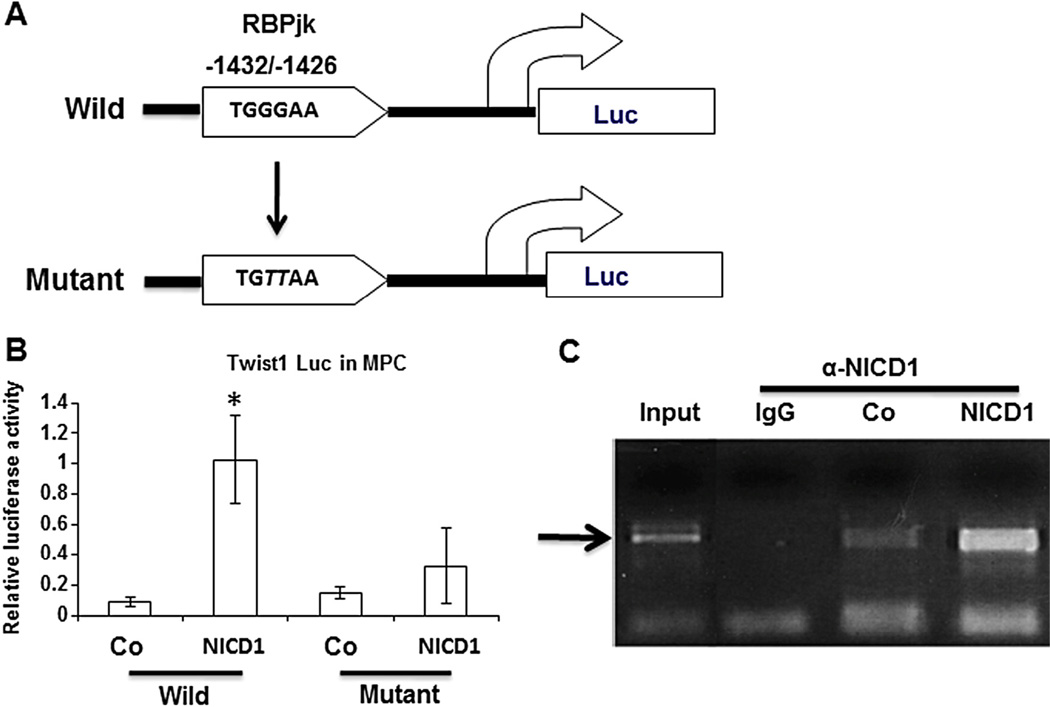Fig. 4.
The RBPJK binding site in Twist1 promoter is required for molecular interaction with NICD1. (A) Top: Bioinformatic analyses uncovered one evolutionarily conserved NICD/RBPJk binding site (TGGGAA) 1426 bps from the 5′ end of the Twist1 transcription start site. Bottom: RBPJK binding site-mutated promoter construct. Nucleotides that mutate from established consensus sequences are highlighted in italic (GG→TT). (B) Luciferase assays showed that NICD1 upregulated gene expression from the wild type promoter, and this transcriptional upregulation is significantly reduced when 3XFLAG NICD1 is co-transfected with the RBPJK binding site mutant Twist1 promoter fragment. Data are means ± s.d. of three independent experiments performed in duplicate and all the results were normalized to internal control (*, P < 0.05 compared with wild control). (C) Chromatin immunoprecipitation was performed on immunocomplex subjected to antibody against NICD1 using chromatin isolated from lentiviral-infected MPCs. PCR results using primers targeting RBPJK binding site showed a specific fragment was detected between the RBPJK response element and Twist1 in control (Co) MPCs, and this fragment formation was enhanced by overexpression of NICD1 in MPCs. The input DNA was used as a positive control for the PCR and IgG as a negative control.

